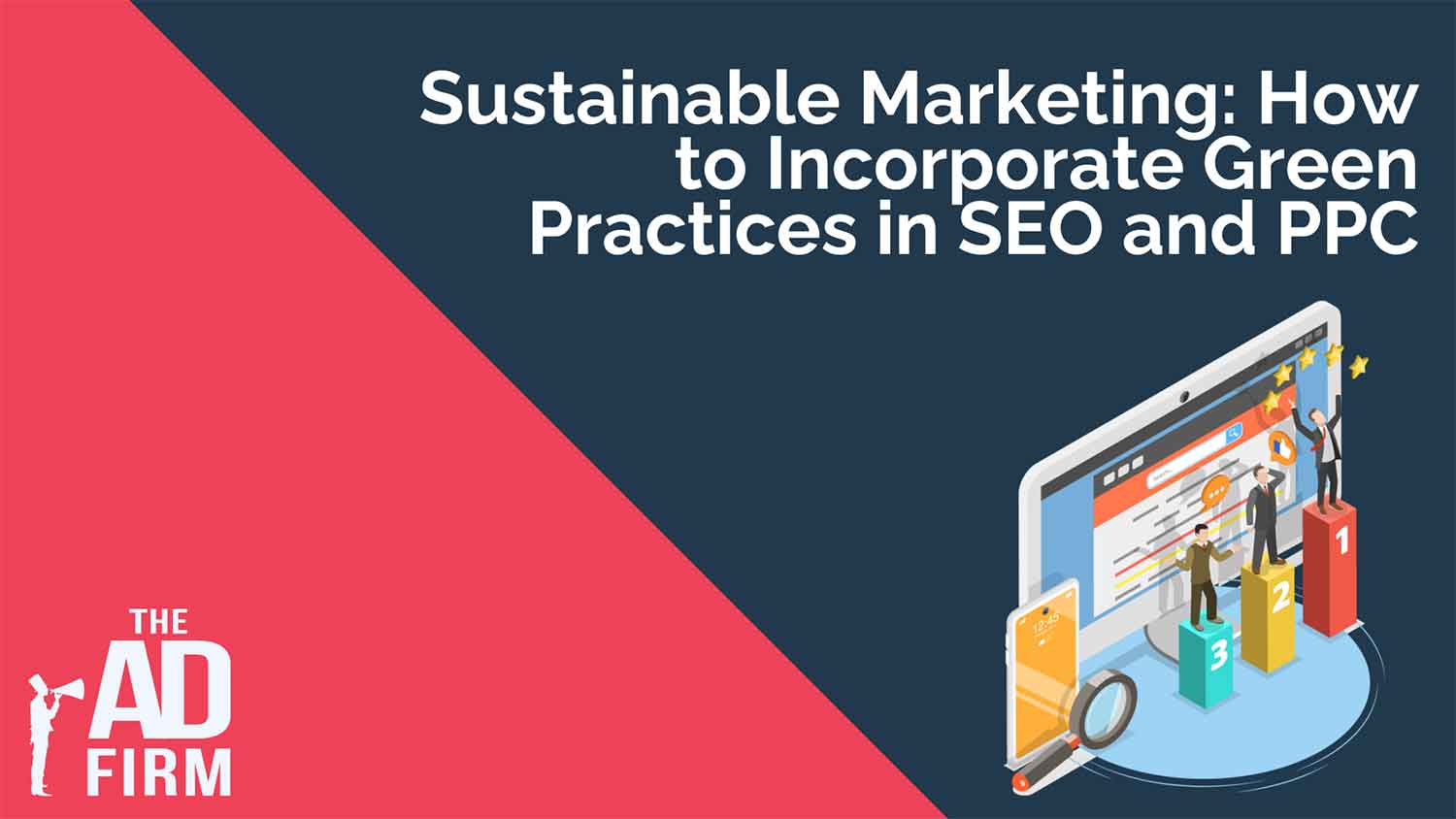Sustainability has moved from being a buzzword to a core business practice. For brands committed to making a real difference, incorporating green practices into their marketing strategies, including SEO and PPC, is essential. Not only does it help the planet, but it also aligns with the growing consumer demand for environmentally responsible brands. In this blog, we’ll explore how businesses can integrate sustainable marketing practices into their SEO and PPC strategies while maintaining high visibility in search engines.
What is Sustainable Marketing?
Sustainable marketing is a strategic approach that focuses on promoting products and services while prioritizing environmental, social, and economic sustainability. This means that businesses go beyond profit, aiming to create positive impacts that benefit the planet and society.
In today’s market, consumers are increasingly looking for brands that share their values. Sustainable marketing aligns with these expectations by focusing on long-term benefits rather than short-term gains. Companies that embrace sustainability can enjoy stronger brand loyalty and set themselves apart from competitors.
Key Principles of Sustainable Marketing
At the heart of sustainable marketing are principles that prioritize long-term thinking and ethical practices. The first key principle is the focus on long-term impact over short-term profit. Brands that take a sustainable approach invest in building relationships and trust with consumers rather than merely making quick sales.
Transparency and ethics are also critical—businesses must be open about their practices and the impact they have on the environment. Finally, aligning business practices with consumer values is vital in today’s market, as consumers are more likely to engage with brands that mirror their environmental concerns.

The Importance of Eco-Friendly SEO
As consumer demand for sustainability grows, SEO strategies must adapt to reflect this shift. Incorporating eco-friendly practices into your SEO can help you attract environmentally conscious customers, driving traffic and long-term loyalty. When consumers search for businesses that align with their values, your brand’s commitment to sustainability can create deeper connections and foster repeat business.
How SEO Can Be Green
Green SEO emphasizes minimizing the environmental impact of your digital presence. This can be achieved by using sustainable hosting providers that rely on renewable energy, optimizing website load speed to reduce energy consumption, and employing lightweight code that decreases your site’s carbon footprint. Every step towards a more energy-efficient website reflects positively on your brand’s environmental commitment.
- Green SEO Keywords and Local Trends
Focusing on green keywords is essential to further boosting your eco-conscious SEO efforts. Terms like “eco-friendly,” “sustainable,” and “upcycled” can help your business rank higher in searches related to environmental responsibility. Identifying low-competition green terms that provide ranking opportunities without facing heavy competition is also important. Additionally, incorporating local SEO strategies can reduce your carbon footprint by optimizing for nearby consumers, decreasing the environmental impact of shipping and transportation.
- Integrating Green Keywords Across Your Website
Once you’ve identified relevant green keywords, ensure they’re used strategically across your website. Optimize page titles, meta descriptions, alt texts, and blog content to reflect your sustainability focus. Incorporating these keywords into product descriptions, social media posts, and other forms of content helps you maintain a consistent message while educating your audience about your sustainable practices.
Optimizing Your Website for Sustainability
A sustainable website goes beyond great design—it minimizes environmental impact while maximizing efficiency. By integrating green SEO with an eco-friendly web design, businesses can significantly reduce their site’s carbon footprint while enhancing user experience.
Key ways web design services can help achieve sustainability include:
- Lightweight Code:
Efficient coding reduces the resources needed to load your website. This includes minimizing bloated frameworks, optimizing JavaScript, and maintaining clean, streamlined code that ensures faster, energy-efficient operations.
- Energy-Efficient Hosting:
Opting for hosting providers using renewable energy (like solar or wind power) can drastically reduce your site’s environmental impact. Green hosting solutions support your eco-friendly initiatives by powering your website with sustainable energy.
- Optimizing Page Load Speed:
Faster-loading sites offer a better user experience and use less energy. Achieve this by:
- Compressing images
- Utilizing lazy loading
- Implementing caching techniques These methods reduce bandwidth usage, lower energy consumption, and improve overall performance.
- Simplified User Interfaces:
A well-organized website with intuitive navigation helps users find information quickly. This reduces browsing time, leading to fewer server requests and lower energy use, contributing to a greener browsing experience.
This approach helps reduce your carbon footprint and enhances your brand’s alignment with modern consumer values.
Implementing Eco-Conscious PPC Campaigns
Pay-per-click (PPC) campaigns can also be made more sustainable. Start by selecting sustainability-related keywords that resonate with eco-conscious consumers. These keywords should focus on green products and services, highlighting their environmental benefits. By aligning your ad campaigns with your sustainability goals, you’ll attract the right audience while reinforcing your brand’s values, such as:
- Leveraging Audience Segmentation on Search Engines and Social Media
Audience segmentation allows you to target users who are specifically interested in eco-friendly products. By using segmentation tools on search engines and social media, you can hone in on individuals already engaging with sustainability-related content, ensuring that your ads reach the right people.
- Localized PPC for Reducing Carbon Footprint
Localizing your PPC campaigns is another way to contribute to sustainability. By using geo-targeting, you can limit your ads to local, eco-conscious consumers. This reduces the carbon footprint associated with delivery and shipping and aligns your business with green initiatives within your community.
- Creating Sustainable Landing Pages for PPC Ads
The landing pages that accompany your PPC ads should reflect your eco-friendly commitment. To reduce energy consumption, use sustainable hosting, fast load times, and minimalistic design principles. A streamlined, eco-conscious landing page improves user experience while keeping your sustainability goals in focus.
Measuring the Impact of Sustainable Practices
Tracking the impact of your green SEO and PPC campaigns is essential for understanding their effectiveness. Google Analytics and other specialized tools can help you track key sustainability metrics, such as energy usage, page load times, and user engagement. These insights enable you to refine your strategies and maximize the environmental benefits of your marketing efforts.
Calculating the Environmental Impact of Your Website and Ads
Estimating the carbon footprint of your website traffic and PPC ads allows you to identify areas for improvement. By tracking how much energy your site uses and how much environmental impact your ads generate, you can take proactive steps to reduce this footprint—whether by optimizing content, improving server efficiency, or shifting to more sustainable platforms.

Building an Ethical Brand Image
Sustainability isn’t just a trend; it’s a long-term commitment that can significantly enhance brand loyalty. Consumers are more likely to support brands that are authentic in their promotion of eco-conscious initiatives. By embracing sustainable digital marketing services, businesses can foster trust and build long-term relationships with their customers, ultimately creating a more loyal customer base.
Communicating Your Green Values Effectively:
- Transparency in Marketing
Authenticity and transparency are crucial in communicating your green values. Being honest about your efforts, challenges, and successes in sustainability sets your brand apart and builds credibility. Share your green initiatives openly, and let your customers know how they contribute to a more sustainable world by choosing your products.
- Showcasing Green Initiatives Through Storytelling
Telling the story behind your green initiatives is a powerful way to engage your audience. Whether through blog posts, social media content, or video campaigns, share the journey your brand is on to become more sustainable. This highlights your commitment and inspires others to join you in supporting eco-friendly practices.
Engaging Consumers with Green Content
Creating engaging green content is a great way to attract eco-conscious consumers. From informative blog posts to case studies that showcase your sustainability initiatives, green content resonates with audiences who care about environmental issues. Social media posts and videos can also amplify your message, spreading awareness and driving engagement.
Using Content to Build a Community of Eco-Conscious Customers:
- Promoting Green Initiatives through User-Generated Content
One way to build a community around your brand’s green efforts is by encouraging user-generated content. Invite your customers to share how they support sustainability or use your eco-friendly products. This creates a sense of community and encourages others to join the movement.
- Influencer Partnerships with Environmental Advocates
Partnering with influencers who are passionate about sustainability is another effective strategy. These advocates can help amplify your green message and connect with a wider audience. Their endorsement adds credibility and trust to your brand’s environmental efforts.
Collaborating with Like-Minded Businesses
Building partnerships with other eco-friendly brands can strengthen your sustainability efforts. By aligning with businesses that share your values, you can collaborate on joint marketing campaigns, share resources, and amplify your message. These partnerships create a united front for sustainability, enhancing the credibility of both brands.
How to Align Marketing Strategies with Green Partners
Aligning your marketing strategies is important when working with green partners. Focus on co-branded campaigns that highlight sustainability, ensuring that both brands’ eco-friendly values are communicated. By joining forces, you can reach a broader audience and have a greater impact.
Future Trends in Sustainable Marketing
Sustainable marketing is evolving, and staying ahead of trends is crucial. As green technologies and consumer demands grow, businesses that adapt will thrive. SEO and PPC strategies will increasingly incorporate energy-efficient practices and environmental responsibility, shaping the future of digital marketing.
Upcoming Green Technologies in Digital Marketing
New technologies are emerging that can help reduce the environmental impact of digital marketing. From AI-driven tools that optimize energy usage to automation systems that streamline processes, these innovations are set to revolutionize the way businesses approach sustainability in SEO and PPC.
Go Green, Get Seen: The Power of Sustainable Marketing
Sustainable marketing isn’t just good for the planet—it’s a powerful way to drive business growth. By integrating eco-conscious practices into your SEO and PPC strategies, you can capture the attention of environmentally aware consumers, foster deeper brand loyalty, and differentiate your business in an increasingly competitive market.
Ready to take the next step? Partner with The Ad Firm and let us elevate your digital marketing efforts while building a sustainable future for your business. Call The Ad Firm today to discover how we can help you lead in both digital innovation and environmental responsibility. Let’s transform your marketing strategy into a force for good.









